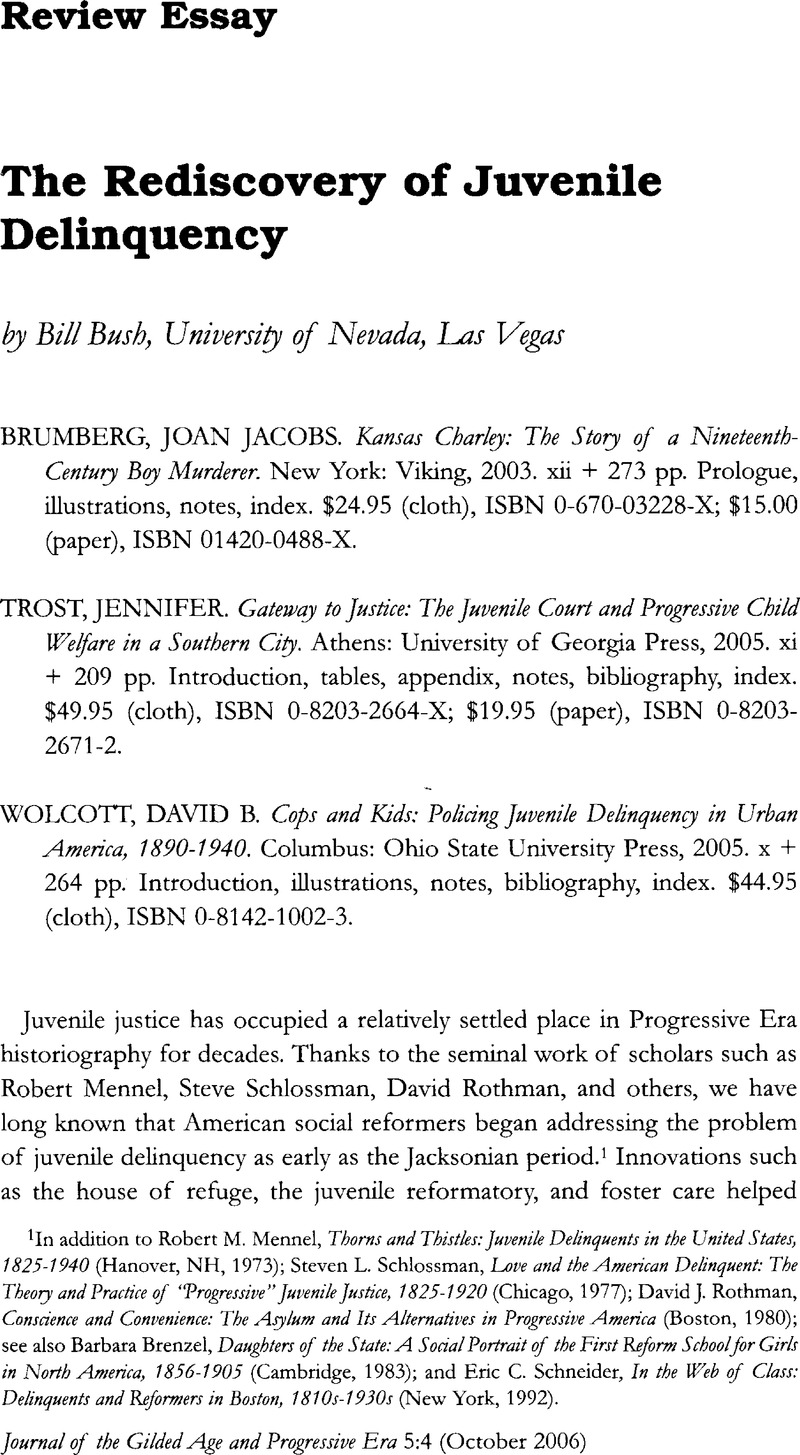No CrossRef data available.
Published online by Cambridge University Press: 08 November 2010

1 In addition to Mennel, Robert M., Thorns and Thistles: juvenile Delinquents in the United States, 1825-1940 (Hanover, NH, 1973)Google Scholar; Schlossman, Steven L., Love and the American Delinquent: The Theory and Practice of “Progressive” Juvenile Justice, 1825-1920 (Chicago, 1977)Google Scholar; Rothman, David J., Conscience and Convenience: The Asylum and Its Alternatives in Progressive America (Boston, 1980)Google Scholar; see also Brenzel, Barbara, Daughters of the State: A Social Portrait of the First Reform School for Girls in North America, 1856-1905 (Cambridge, 1983)Google Scholar; and Schneider, Eric C., In the Web of Class: Delinquents and Reformers in Boston, 1810s-1930s (New York, 1992)Google Scholar.
2 In addition to the books under review here, see also Feld, Barry C., Bad Kids: Race and the Transformation of the Juvenile Court (New York, 1999)Google Scholar; Anne Meis Knupfer, Reform and Resistance: Gender, Delinquency, and America's First juvenile Court (New York, 2001)Google Scholar; and Tanenhaus, David S., Juvenile Justice in the Making (New York, 2004)Google Scholar.
3 See also Shelden, Randall G. and Osborne, Lynn T., ‘“For Their Own Good’: Class Interests and the Child-Saving Movement in Memphis, Tennessee, 1900-1917.” Criminology 27 (1989): 747CrossRefGoogle Scholar.
4 Odem, Mary E., Delinquent Daughters: Protecting and Policing Adolescent Female Sexuality in the United States, 1885-1920 (Chapel Hill, 1995).Google Scholar
5 Kasson, John F., Amusing the Million: Coney Island at the Turn of the Century (New York, 1978)Google Scholar; and Peiss, Kathy, Cheap Amusements: Working Women and Leisure in New York, City, 1880 to 1920 (Philadelphia, 1986)Google Scholar.
6 Shaw, Clifford R., The Jack-Roller: A Delinquent Boy's Own Story (Chicago, 1930).Google Scholar